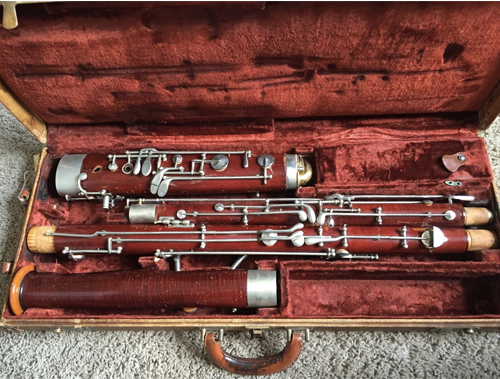The clown of the orchestra. The farting bedpost. Whatever you like to call it, the bassoon is one of the most intriguing members of the woodwind family in terms of both its appearance and its sound. It looks like somebody tried to make a saxophone out of a didgeridoo. As for the sound, imagine a talented goose singing Barry White covers.
Casual music fans are familiar with the bassoon’s deep, reedy tone — equally adept at melodic crooning and comedic staccato bursts — even if they don’t know what instrument produces it. They know it as the grandfather’s theme in “Peter and the Wolf.” They know it as the crazy counterpoint in the opening lick from Smokey Robinson’s “Tears of a Clown,” laid down by longtime Detroit Symphony Orchestra principal bassoonist Charles Sirard. And then there’s the quirky, lilting melody of the Leave it to Beaver theme song, “The Toy Parade.” So how did such a bizarre and beautiful musical machine come to be?
The History and Evolution of the Bassoon
The ancient history of the bassoon is fairly murky, but ancestors of the bassoon and its kid brother the oboe have been around since the middle ages. Double-reed woodwind instruments called “shawms” were in use in Europe by at least the 12th century, having probably arrived there from the Middle East, where similar instruments had been developed a few centuries earlier.

By the Renaissance, shawms were squawking all over Europe, and by the 16th century they were making shawms that played in a variety of ranges, from sopranino to double bass. One branch of the shawm family that became common, especially in Brittany, was the bombarde. The “bombarde” label was mainly applied to lower-ranged shawms, while higher-pitched shawms were usually just called shawms.
As Renaissance music grew more complex, musicians saw the need for a woodwind instrument that could play really low and reasonably loud. The bombardes that were available presented a conundrum: in order to play as low as composers wanted, the instruments had to be ridiculously long, as much as three meters of tube.
The solution instrument makers came up with in the second half of the 16th century was to fold it up in the manner of brass instruments. The bore did a u-turn at the bottom, effectively cutting the length of the instrument in half and making it more manageable to play and transport. The bending also made the instrument’s tone considerably mellower, so it was dubbed the “dulcian,” from the Latin for “sweet sounding.” The dulcian is the direct forerunner to the modern bassoon, the homo erectus to the bassoon’s homo sapiens. The dulcian went by other names as well, including the curtal in England and the Fagott in German-speaking places.
Dulcians evolved into bassoons in the 17th century, when the modern four-joint construction was developed, probably in France. Bassoons had a range that could stand up against the lowest members of the string family, so composers who wanted bass notes out of a woodwind instrument now had something to work with.

Baroque composers found a variety of roles for the bassoon. Bach liked to assign them obligato parts, while Vivaldi wrote more than 30 bassoon concertos. By the dawn of the classical era, the bassoon was firmly entrenched as a regular member of orchestras and chamber ensembles.
The Contemporary and French Bassoons
Instrument makers tweaked the bassoon in the 18th and 19th centuries, adding more keys and refining the shape to optimize the sound. By far the most important modifications, leading to the development of the modern bassoon, were those concocted starting in about 1825 by Carl Almenraeder, a bassoonist and instrument maker from Germany. Almenraeder incorporated the latest knowledge of materials and acoustics into his designs, and his work resulted in a 17-key bassoon that was much more balanced and responsive.

In 1831 Almenraeder opened a workshop in partnership with another talented maker, Johann Heckel. The company they founded, now known as Wilhelm Heckel GmbH, Wilhelm was Johann’s son, continues to produce some of the finest bassoons in the world to this day.
A bassoon schism of sorts erupted in the late 19th century, when a French instrument company, Buffet-Crampon, started making a bassoon that had a narrower bore and used a different fingering system. Buffet-system, or French, bassoons have 22 keys and are known for their superior tonal quality in the upper register. They are still popular in some parts of the world today, particularly France and parts of Latin America. But Heckel-system horns, which these days have 25 to 27 keys, remain the industry standard.
If you like the sound of the bassoon, but classical music isn’t your thing, you may want to check out the work of leading jazz bassoonist Paul Hanson, or better yet, listen to the great Yusef Lateef on the tune “India” from his 1963 album Jazz ‘Round the World.
